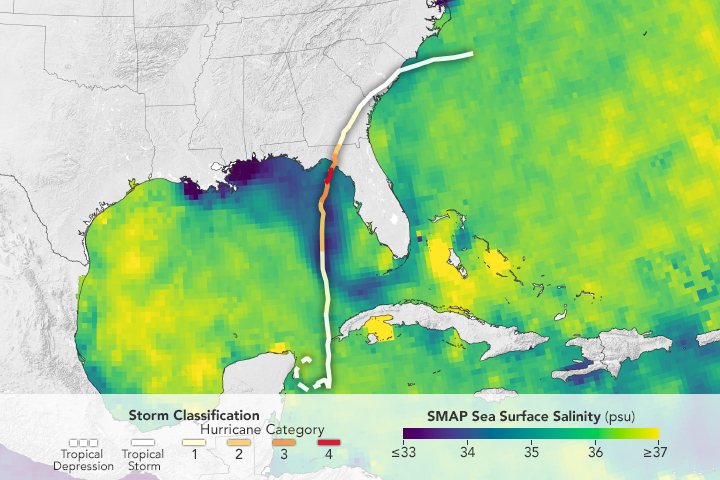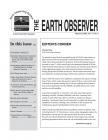



Recent Imagery
You will be directed to the NASA Visible Earth webpage when you select Images by Mission below, or click on the images at right that are randomly generated to represent four out of all possible topics.
The Earth Observer has a new look! Visit the NEW Earth Observer website.
The Earth Observer: May - Jun, 2002
In This Issue
Click title below to view page
- Editor's CornerFront Cover
- Featured Articles
- Radiometric Measurement Comparisons at NASA’s Goddard Space Flight Center: Part I. The GSFC Sphere Sources3
- An Introductory Multidisciplinary Set of MODIS Data for the Earth Sciences Community9
- First Glimpses from Aqua11
- Using Landsat Data to Estimate Planted Area and Production Levels of Sugarcane in Argentina12
- An Overview of the Solar Radiation and Climate Experiment17
- NEWS: Mixed Croplands May Make Some Areas Cooler, Wetter in Summer23
- Regular Features
- EOS Scientists in the News24
- Earth Science Education Program Update26
- Science Calendars27
- The Earth Observer Information/InquiriesBack cover
Editor's Corner
Michael King, EOS Senior Project Scientist
I’m pleased to report that the successful launch of NASA’s Aqua mission on May 4 has been followed by equally successful instrument activation and initial science data acquisition for all sensors. A final orbit-raising maneuver occurred on June 17, which raised Aqua to its operational altitude of 705 km. NASA Associate Administrator for Earth Science, Dr. Ghassem Asrar, released initial engineering imagery at the International Geoscience and Remote Sensing Symposium (IGARSS) in late June. The first science data from Aqua are scheduled to be released during a NASA press conference in September.
Aqua’s orbit will continue to be adjusted to complement the equator crossing time of Terra, which crosses the equator at about 10:30 am. Aqua’s final orbit will result in an equator crossing time of 1:30 pm, enabling diurnal observations of many parameters from the MODIS and CERES instruments, which are flown on both satellites.
Aqua will eventually fly in “formation” with other upcoming missions including CALIPSO, CloudSat, PARASOL, and Aura. Currently...
Read more...

